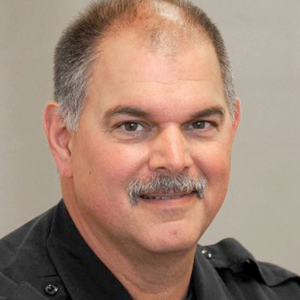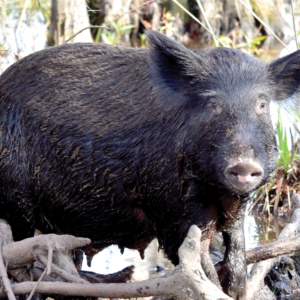A recent article published by the Federal Reserve Bank of Minneapolis, which serves several states including Montana, highlighted three points about the ability of Americans to deal with a “rainy day”:
* Fifty-four percent of U.S. households have emergency savings to cover three months of expenses
* Americans have exhausted accumulated pandemic savings, and the saving rate is lower than before COVID
* After-inflation earnings appear on-track with longer-term trends, but spending has settled significantly higher
By Jeff Horwich
Senior Economics Writer
The “rainy day fund” is a mainstay of personal finance columnists: Set aside enough to cover a few months of household expenses in an emergency. It is hard advice to follow. Economists have long recognized that many households at all income levels live hand-to-mouth, with most income going toward consuming goods and services and paying off debt. Even when people own considerable assets, many are locked in illiquid forms like housing and retirement accounts.
The COVID pandemic was a shock to our spending and saving. A surge of government financial support coincided with the sudden loss of many ways we typically part with our money—restaurants, concert tickets, leisure travel. For a while, more households looked ready for that rainy day.
New data confirm Americans are sliding back from our pandemic savings peak. The Fed’s latest Survey of Household Economics and Decisionmaking (SHED) finds that 54 percent of U.S. adults have enough savings to cover three months of expenses if they lost their primary source of income.
These results, gathered in October 2023, are down slightly from a year before and more than 5 percentage points off from the high-water mark in 2021. The downward trend is similar across education levels, racial groups, and other categories the SHED explored. There is some good news here: The proportion of rainy day–ready households seems to have stabilized. And we are still in better shape than the late 2010s, when the Fed began asking the question.
A complementary view comes from the personal finance website Bankrate, which recently found 2 in 3 Americans would be worried about covering even one month of living expenses if they lost their job. Per their survey in January, 51 percent of Americans would have to cut spending or borrow to pay a sudden $1,000 expense.
Seen through certain lenses, the current U.S. economy is remarkedly resilient. Consumer spending, corporate profits, and job growth have been sustained despite higher interest rates. Emergency savings and other pocketbook indicators tracked by the SHED provide another critical vantage for policymakers to understand financial well-being and resilience at the household level.
Economists at the San Fransisco Fed have tracked the rise and fall of “excess savings” accumulated during the pandemic—that is, savings above what we might have expected based on the pre-pandemic trend. These excess savings reached a peak of $2.1 trillion in August 2021—more than $8,000 per U.S. adult.2 According to the San Francisco Fed calculations, households finally exhausted them in March of this year. As of this writing, Americans’ cumulative savings are now slightly below where we would expect them to be if the pandemic had never happened.
The official personal saving rate published by the U.S. Bureau of Economic Analysis also shows how American savings returned to earth after government stimulus payments in 2020 and 2021. As the economy reopened, so did wallets. Since early 2022, Americans are saving less than 5 percent of disposable income.
We are resuming a long-term story. Historically, the personal saving rate fell from the teens in the 1960s, ’70s, and early ’80s to less than 2 percent in the mid-2000s. In the 2010s, the saving rate rose a bit and settled around 5 percent. So far, since the pandemic, we are saving less than we did before it.
Saving for a rainy day is some combination of personal decisions and economic pressures—not least, the 18 percent increase in the overall price level in the four years since the start of the pandemic. To peer through the effects of inflation, it is valuable to look at real (after-inflation) patterns for a clearer view of what, if anything, has changed.
Let’s start with earnings. The real hourly compensation index from the U.S. Bureau of Labor Statistics shows how the surge in real earnings early in the pandemic petered out through 2021 and 2022. While some American workers experienced big raises during this period, price inflation was faster.
After a wild, three-year ride of labor shortages, job quitting, and inflation, the average American worker has neither gained nor lost ground. Real compensation is back where the pre-pandemic trend would have projected.
However, this return-to-trend is out of alignment with the spending side of the household ledger. True, life has gotten more expensive because of inflation; in raw dollar terms, we would expect consumer spending to increase. Yet even after factoring in higher prices, spending by U.S. consumers remains more than 4 percent above the pre-pandemic trend.
In today’s dollars, Americans are spending about $2,300 more than what the pre-pandemic trend would project. Why we are consuming significantly more—even after inflation—is a fascinating question with no obvious answer.
In the meantime, the observation that real spending has settled at a higher level over the past three years seems a likely factor in the lower share of Americans with emergency savings.
At the same moment, Americans are feeling a steep rise in interest payments (which are not included in the spending data). As interest rates have increased on credit cards, car notes, and other personal loans, real per capita interest payments are almost double their pre-pandemic level.
U.S. credit card balances in early 2024 are 13 percent higher than one year prior. Credit card delinquencies are at the highest level since 2012.
These sticky increases in spending and borrowing—while compensation has fallen back to its long-term trend—help explain why emergency savings might be hard to build. Setting aside a rainy day fund is also harder for some than for others.
Notably, Black adults and people aged 45 to 59 were the only groups to show slight upticks in rainy day readiness in 2023. Younger adults and people without a college degree are substantially less ready to ride out a disruption in income. Black and Hispanic Americans, people in rural areas, and parents with children at home—many of whom are facing rising child care costs—are also less likely to have emergency savings set aside.




